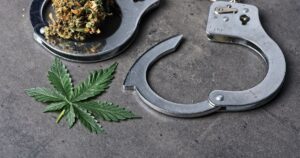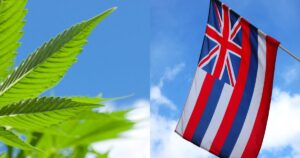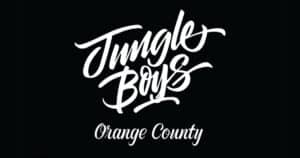Who knew Oklahoma is one of the most free-market and patient-friendly cannabis programs in the nation, if not the world?
Yes, OK is still medical only, but it is open medical with no qualifying conditions. There are also two citizen ballot initiatives for 2022, one to revamp medical and remove the medical tax and one for full adult-use access to cannabis.
Yes, OK is a “red” state, as Politico pointed out in their November 2020 article appropriately titled “How One of the Reddest States Became the Nation’s Hottest Weed Market.“
Some call it the Wild West; many do.
But no, other states and even other countries’ programs are probably not better.
Other states may have the appearance of higher safety or quality standards.
Unfortunately, license caps, forced vertical integration, mandatory track and trace, even lab testing, and frequent inspections do not directly equate to safety and quality for the consumer.
They do, however, directly relate to increased costs for the businesses and eventually increased costs for sick patients. Ultimately, this is what keeps the “illegal” market alive.
Unsurprisingly, the excessive regulations put on cannabis operators by those who don’t understand it are causing the same issues the war on drugs has caused for decades.
Critics mention OK’s “high amount” of unlicensed grows or that some companies may be sending products and profits out of state. Rather than cry foul of OK, it would be wiser to consider why more states don’t have more permissive programs like OK’s.
If cannabis was legal everywhere and without excessive taxes, there would not be a way to profit off unlicensed cannabis substantially.
However, there are still significant price differences in what’s considered legal and illegal cannabis. This is because of high taxes, local dispensary bans, and barriers to entering most states’ legal markets. Meanwhile, some states still do not have any form of legal cannabis.
Rand Think Tank studies agree that too high of taxes results in de facto prohibition. The more challenging and expensive it is to go legal, the less likely average unlicensed operators will switch over.
Some are quick to offer more rules and legal solutions for an industry and plant that has never responded well to either. It’s not going to start now, and if we want to respect and give back to any of those harmed by the war on drugs: it’s best we get out of the way… not try to tax and regulate “like alcohol.”
Cannabis is not alcohol, and it is more than just a commodity; its uses range from building material, adult-use and relaxation, medicine, a tool for spirituality, wellness, and more.
Cannabis is also intertwined with various cultures and has a culture of its own, one that is protectionist by nature and necessity.
It’s not wrong to lab test by any means; it’s not only reasonable, but it is also highly recommended.
Yet, it isn’t very ethical to claim lab testing or track and trace protects consumers when they can only “keep honest people honest.” Meaning it does not accomplish what it sets out to do. Many patients and consumers are duped into believing that since their cannabis is from a “licensed business “and “lab tested,” it must be safe and of decent quality. Unfortunately, neither is always true. See, “THC results are bullshit, and you’re getting screwed.” THC is also not an indicator of quality, though this is a discussion for a different time.
People have safely used untested, unregulated cannabis for much longer than they have used corporate cannabis.
Look to examples of hundreds of corporate cannabis companies that recalled their “lab-tested, and safe cannabis.” It’s been tested, yet somewhere, somehow, patients received dangerous medicine on multiple occasions.
And make no mistake, there is an abundance of unreported, un-recalled cannabis that was full of mold or otherwise shouldn’t pass any “labs.” Yet, it made its way to a patient or consumer— with testing, of course.
What’s wrong with claiming larger corporate companies will do better and adhere to specific safety protocols?
It’s that they don’t. They are often selling moldy or otherwise harmful cannabis, even after it’s been lab-tested.
This is because while lab testing is still worthwhile, it’s not a silver bullet for mold, pests, metals, or quality— hardly any of those things— in fact, lab testing is one of the commonly corrupted areas of the industry and for many reasons. For one, lab testing is subjective and limited in scope.
Labs only test a small portion of a batch or harvest. Often, growers can select what they submit for testing. Even well-intended growers may submit a better part of their harvest. No matter how transparent and honest the grower or processor is, it’s still not accurate to claim that testing a sample equates to the rest being safe. It is only a snapshot of a portion of the harvest.
A “full-panel” lab test can only test for what is on the panel.
Labs do not test cannabis products and receive a readout of everything inside the sample; instead, they use instruments that identify pre-identified compounds:
For example, the lab will look for THC, CBD, other cannabinoids, certain terpenes, certain solvents, certain metals, certain toxins, certain fungi, molds, bacteria, and so on.. but it does not identify everything. They can’t identify things they are not testing for. Some labs are excellent, some better than others, and some labs are downright crooked, too.
Labs are incentivized to give good results, and growers and processors are incentivized to provide good samples. Patients and consumers can’t rely on just labs.
And legally licensed companies often lie about what’s in their vape cartridges, as much or more than any unlicensed producers. Still, it’s tough to quantify— they both rarely get caught. Labs alone don’t solve these issues- competition, quality products, innovation, and consumer education does.
Not all labs are bad; perhaps not even most are “bad.”
The issue is, more well-intended standards and rules drive up costs and drive out those already harmed by the war on drugs and other small operators— the one’s many claim they want to give licenses to and help. In addition, some arbitrary requirements leave little to no room for error and primarily burden the smaller companies trying to stay compliant.
This is regulatory capture, and it is in all levels of cannabis.
So what makes approaches like Oklahoma’s better?
First, it creates a system that is difficult to strong-arm. Local towns can not ban dispensaries or patients’ homegrow.
Oklahoma has the highest amount, per capita, of medical cardholders per state.
Oklahoma is as close as possible to a truly free market, and patients can homegrow up to 12 plants per person.
Oklahoma’s medical program allows residents of Oklahoma to be “legal” for $100 for two years, roughly $300 if you include the virtual or in-person doctor’s visit. Less if you are a 100% disabled veteran or on disability. No qualifying conditions for the program mean that the doctor can decide based on their patient’s need versus a list provided by the state so common elsewhere.
Additionally, commercial licensing is affordable! There are no limits to the license either.
Patients can start their own businesses relatively affordably. And, since there are no license caps or forced vertical integration, no one is forced to support big corporations.
Licenses start at $2500 per location, per business. Minimal other fees can apply depending on the type of business and location; however, it is a fraction of the cost seen in other states.
There’s a tremendous amount of innovation happening out here in Oklahoma. And the brands that are leading the charge here are putting patients, education, and community first; they are planning for the long game and will be successful.
Most larger companies we see dominating the hyper-regulated strangled markets like Florida, Illinois, and the east coast are staying away from Oklahoma.
We do see some limited licensing of larger edible and cartridge brands. Still, most companies are smaller, and the market concentration ratio is low.
And reasonable lab testing is required.
Maybe fewer rules and more access to cannabis is the key?
After all, the government’s attempts at taxing cannabis and then making our plant entirely illegal are how we got here in the first place.
So should we be counting on a fair and equitable program from this same entity?
See “Taxed to Death: Follow One Gram of Weed along California’s Twisted Path from Seed to Sale” for an example of how it’s played out in California.
We should know and do better. We ought to be very specific about what we mean by “legalization.”
- Texas Expands Medical Cannabis Access with House Bill 46
- MMJ BioPharma Cultivation vs. the DEA
- Poll Shows Americans Back States’ Right to Cannabis Reform
- Restaurant Spotlight: Pizzeria Due – Where Deep Dish Pizza Becomes a Chicago Rite of Passage
- Maryland Leads the Way in Cannabis Pardons, Setting an Example for Much-Needed Cannabis Reform
- Military Construction and Veterans Affairs Bill Amendments Could Change Medical Marijuana and MDMA-Assisted Therapy Options for Veterans















